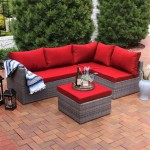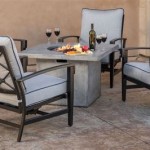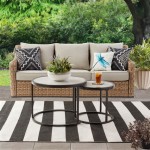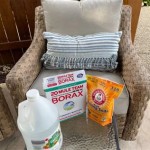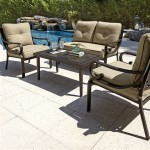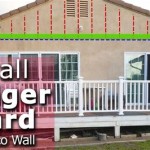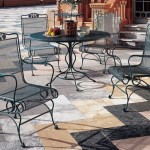What Is The Best Outdoor Patio Furniture Material For Dogs And Cats?
Choosing the right outdoor patio furniture can be a complex process, compounded when pets are part of the equation. Considerations such as durability, ease of cleaning, and resistance to scratches and other forms of damage become paramount. Certain materials withstand the rigors of pet ownership better than others, ensuring longevity and maintaining aesthetic appeal amidst the playful antics of dogs and cats. The ideal patio furniture material balances pet-friendliness with overall style and comfort.
This article will explore various outdoor patio furniture materials, evaluating their strengths and weaknesses in relation to canine and feline companions. The objective is to provide information to select the most suitable material, keeping both pets and their owners happy with their outdoor living space.
Durability and Scratch Resistance
One of the primary concerns for pet owners is the durability of outdoor furniture. Dogs, with their tendency to jump and scratch, and cats, with their innate need to sharpen their claws, can quickly damage less robust materials. The ability of a material to withstand these behaviors is a critical factor in its suitability for a pet-friendly patio.
Metal, specifically powder-coated aluminum and wrought iron, stands out as a highly durable option. Powder coating provides a protective layer that resists scratches and rust, making it well-suited for withstanding the daily wear and tear inflicted by pets. Wrought iron, while heavier, is exceptionally sturdy and can endure significant abuse. The downside of metal is that it can become hot in direct sunlight, potentially causing discomfort for pets.
Teak wood is another durable option, known for its natural resistance to rot, insects, and weather. While not entirely scratch-proof, teak is a dense hardwood that can withstand a reasonable amount of wear. Over time, it develops a silver-gray patina, which can actually enhance its aesthetic appeal, even with minor scratches. The natural oils in teak also help to repel moisture, making it a good choice for areas with high humidity.
Recycled plastic lumber offers a durable and low-maintenance alternative. This material is made from recycled plastics, making it an environmentally friendly option. It is resistant to moisture, insects, and rot, and it doesn’t splinter, making it safe for pets. Recycled plastic lumber also comes in a variety of colors and styles, allowing for aesthetic flexibility. While it can be scratched, the scratches are often less noticeable than on other materials.
Resin wicker is a synthetic material designed to mimic the look of natural wicker. High-quality resin wicker is typically made from polyethylene or PVC, making it durable and weather-resistant. It is less prone to damage from scratching than natural wicker, although persistent scratching can still cause wear over time. The key is to select a resin wicker that is tightly woven and made from a durable plastic.
Materials to avoid due to low durability include natural wicker, which is easily damaged by pets, and fabrics that are not specifically designed for outdoor use. These materials tend to tear easily and can quickly become unsightly with pet traffic.
Ease of Cleaning and Stain Resistance
Pet owners understand the importance of easy cleaning. Accidents, muddy paws, and shedding fur are inevitable aspects of pet ownership, and the chosen patio furniture material must be easy to clean and resistant to stains. This not only maintains the furniture's appearance but also helps prevent the buildup of bacteria and allergens.
Metal furniture, especially powder-coated aluminum, is very easy to clean. A simple wipe-down with a damp cloth is usually sufficient to remove dirt and spills. For tougher stains, a mild soap solution can be used without damaging the finish. The non-porous surface prevents liquids from seeping in, making it highly stain-resistant.
Recycled plastic lumber is also exceptionally easy to clean. Its non-porous nature means it resists moisture and stains effectively. A quick wash with soap and water is typically all that is needed to keep it looking its best. Unlike wood, it does not require sealing or staining, further simplifying maintenance.
Teak wood requires a bit more maintenance than metal or plastic lumber. While naturally resistant to moisture, spills should be cleaned promptly to prevent staining. Regular cleaning with a wood cleaner specifically designed for teak helps maintain its appearance. Applying a teak oil or sealant can also help protect it from the elements and prevent staining. However, some argue that allowing teak to weather naturally to its silver-gray patina is preferable.
For cushions and fabrics, selecting outdoor-specific materials is crucial. Look for fabrics that are water-resistant, stain-resistant, and UV-resistant. Acrylic fabrics, such as Sunbrella, are a popular choice due to their durability and ease of cleaning. These fabrics are designed to withstand the elements and can be cleaned with soap and water or even bleach solutions for tougher stains. Consider using darker colors or patterns to camouflage pet hair and minor stains.
Avoid fabrics that are difficult to clean or prone to staining, such as natural cotton or linen. These materials absorb liquids and can quickly become soiled and unsightly. Also, furniture with intricate crevices or hard-to-reach areas can be challenging to clean, increasing the effort required to maintain a pet-friendly patio.
Comfort and Safety
While durability and ease of cleaning are important, the comfort and safety of both pets and owners should also be considered. A comfortable and safe patio environment ensures that everyone can enjoy the outdoor space without risk of injury or discomfort.
Metal furniture can become hot in direct sunlight, which can be uncomfortable or even dangerous for pets. To mitigate this, consider placing metal furniture in shaded areas or using cushions and throws to provide a cooler surface. Choose cushions made from breathable fabrics that allow air circulation and prevent overheating.
Teak wood is generally comfortable to sit on, but it can benefit from cushions for added support. Ensure that the cushions are secure and do not pose a choking hazard to pets. Avoid cushions with small buttons or embellishments that pets might chew off and ingest.
Recycled plastic lumber can also be surprisingly comfortable, especially when contoured for ergonomic support. Like metal, it can heat up in direct sunlight, so shading or cushions are recommended. Ensure that the furniture is stable and does not wobble, as unstable furniture can be a safety hazard for both pets and people.
Avoid furniture with sharp edges or exposed hardware that could injure pets. Regularly inspect furniture for any signs of wear and tear, such as loose screws or splintered wood, and repair them promptly. Keep the patio free of any potential hazards, such as poisonous plants, chemicals, or sharp objects.
Provide pets with their own designated areas on the patio, such as a comfortable dog bed or a shaded spot to rest. This allows them to enjoy the outdoor space while minimizing the risk of them damaging the furniture. Offer plenty of fresh water and shade, especially during hot weather, to prevent dehydration and overheating.
Furthermore, consider the overall layout of the patio. Ensure there is ample space for pets to move around freely without bumping into furniture or other obstacles. A well-designed patio should be both functional and pet-friendly, creating a welcoming and safe environment for everyone to enjoy.
The choice of patio furniture extends beyond the materials themselves. The construction quality of the furniture is equally important. Look for sturdy frames and well-secured joints. Furniture that is poorly constructed is more likely to break down under the stresses of pet activity. Regular maintenance, such as tightening screws and cleaning surfaces, will help extend the life of your patio furniture.
Ultimately, the best outdoor patio furniture material for dogs and cats is one that balances durability, ease of cleaning, comfort, and safety. By considering these factors carefully, pet owners can create an outdoor living space that is both stylish and pet-friendly, ensuring that everyone can enjoy the patio to the fullest.
It is also prudent to consider the specific breed and temperament of your pet when selecting patio furniture. A large, active dog may require more heavy-duty furniture than a small, docile cat. Similarly, a pet that tends to chew may necessitate different material choices than one that does not. Tailoring the furniture selection to the individual needs of your pet will help ensure the longevity of your outdoor investment.
Finally, remember that the design and layout of your patio can also influence how well your furniture holds up to pet use. A well-planned patio will minimize the potential for damage and make it easier to maintain a clean and safe environment for both you and your furry friends.

What Are The Best Sofa Fabrics For Families With Cats And Dogs

The 8 Best Outdoor Sofas And Chairs Of 2025 Reviews By Wirecutter

14 Pet Friendly Couches In 2025 Best For Dog And Cat Owners

7 Best Couch Material For Dogs And Pets According To Experts

The 8 Best Outdoor Sofas And Chairs Of 2025 Reviews By Wirecutter

Cat Fences Outdoor Enclosures Purrfect Fence

The 8 Best Outdoor Sofas And Chairs Of 2025 Reviews By Wirecutter

Best Wicker Furniture 2025 Forbes Vetted

Outdoor Furniture Guide 2024 Experts Share Everything You Need To Know

The Best Patio Dining Sets Reviews By Wirecutter
See Also

